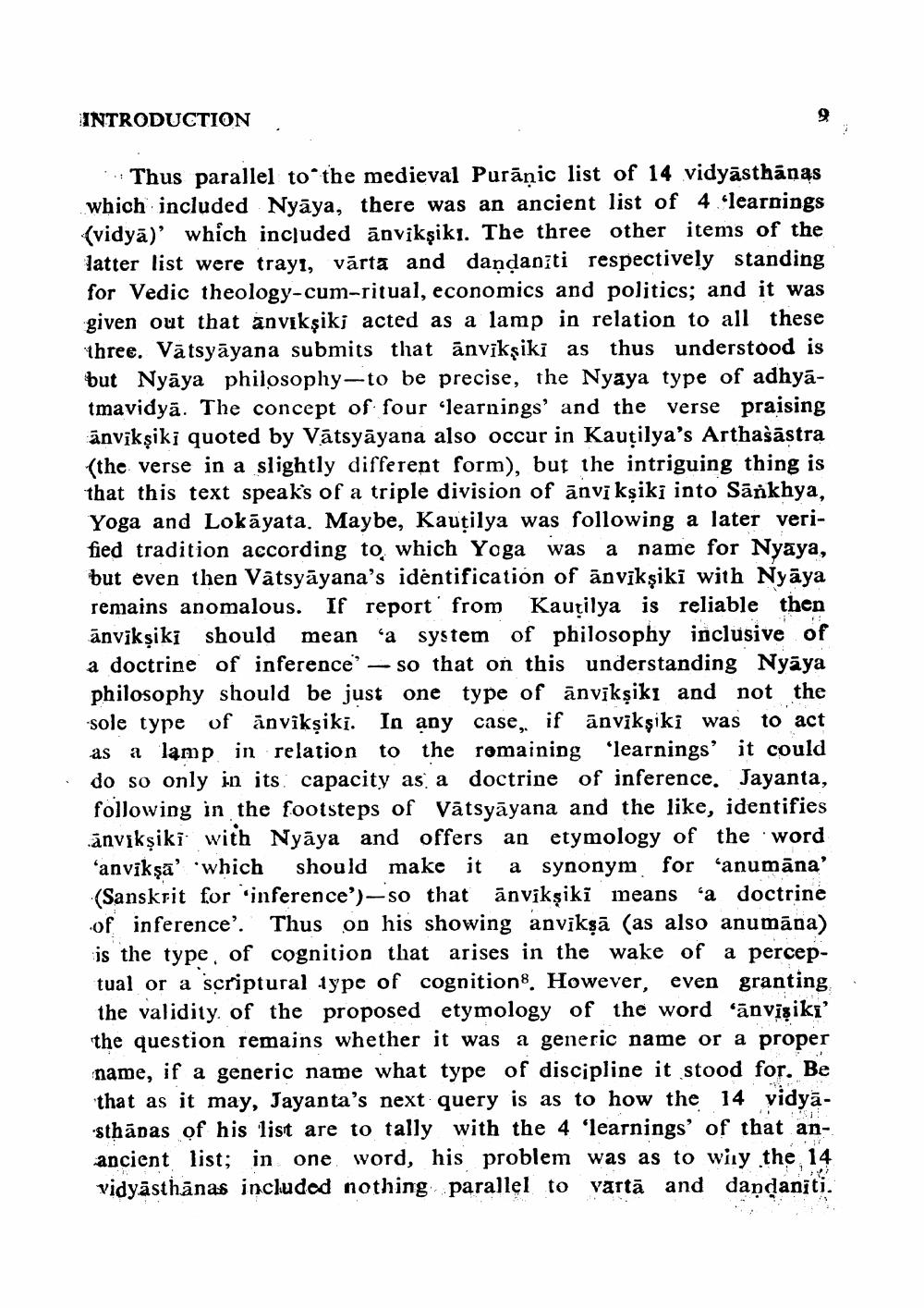________________
INTRODUCTION
Thus parallel to the medieval Purāņic list of 14 vidyāsthānas which included Nyāya, there was an ancient list of 4 learnings (vidyā)' which included anviksiki. The three other items of the latter list were trayı, vārta and dandanīti respectively standing for Vedic theology-cum-ritual, economics and politics; and it was given out that anvıkşikj acted as a lamp in relation to all these three. Vātsyāyana submits that anvikșiki as thus understood is but Nyāya philosophy--to be precise, the Nyaya type of adhyatmavidyā. The concept of four learnings and the verse praising ānvikşiki quoted by Vātsyāyana also occur in Kautilya's Arthašāstra
he verse in a slightly different form), but the intriguing thing is that this text speaks of a triple division of anvi kşiki into Sankhya, Yoga and Lokāyata. Maybe, Kautilya was following a later verified tradition according to, which Yoga was a name for Nyaya, but even then Vätsyāyana's identification of anvīkşiki with Nyāya remains anomalous. If report from Kauțilya is reliable then ānvikșiki should mean a system of philosophy inclusive of a doctrine of inference – so that on this understanding Nyāya philosophy should be just one type of ānvikșiki and not the sole type of anvikșiki. In any case, ifānviksiki was to act as a lamp in relation to the remaining learnings' it c do so only in its capacity as a doctrine of inference. Jayanta, following in the footsteps of Vātsyāyana and the like, identifies canvikșiki with Nyāya and offers an etymology of the word ‘anvikşa' 'which should make it a synonym for 'anumāna' (Sanskrit for 'inference')-so that anviksiki means “a doctrine of inference'. Thus on his showing anvikşā (as also anumāna) is the type of cognition that arises in the wake of a perceptual or a scriptural type of cognition. However, even granting the validity of the proposed etymology of the word 'anvīşiki' the question remains whether it was a generic name or a proper name, if a generic name what type of discipline it stood for. Be that as it may, Jayanta's next query is as to how the 14 vidyā. -sthāpas of his list are to tally with the 4 learnings of that anancient list; in one word, his problem was as to wiry the 14 vidyasthānas included nothing parallel to vartā and dandaniti.




